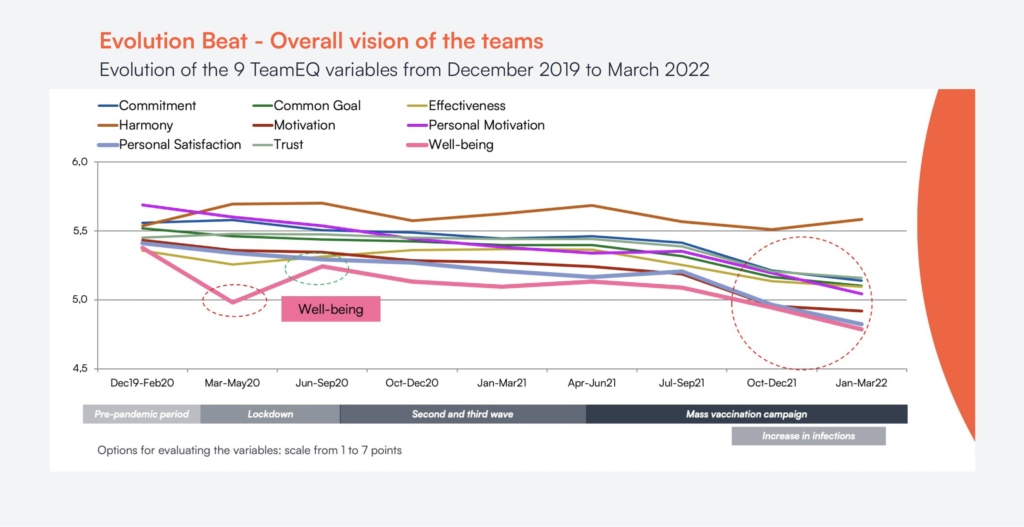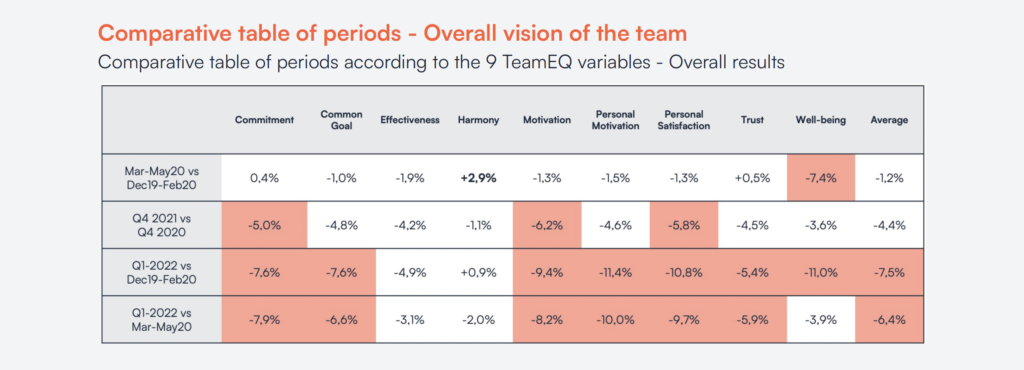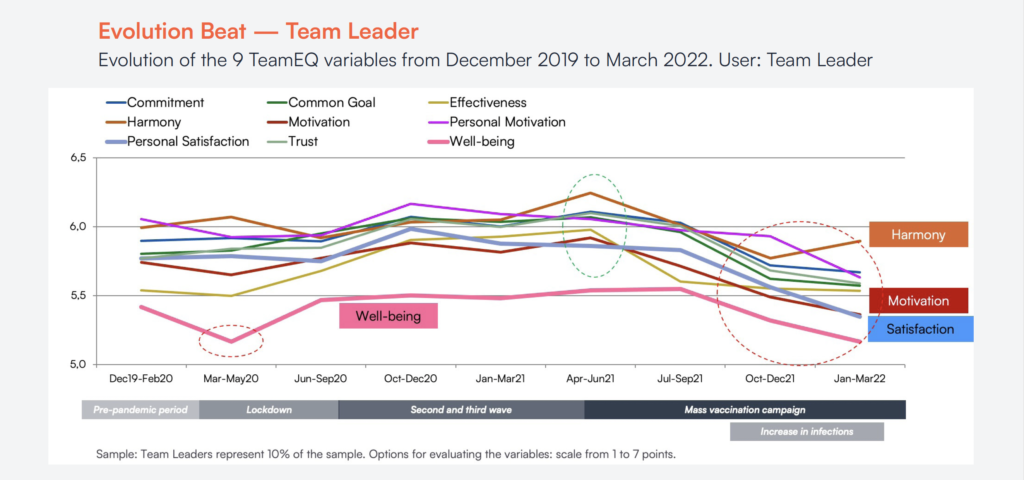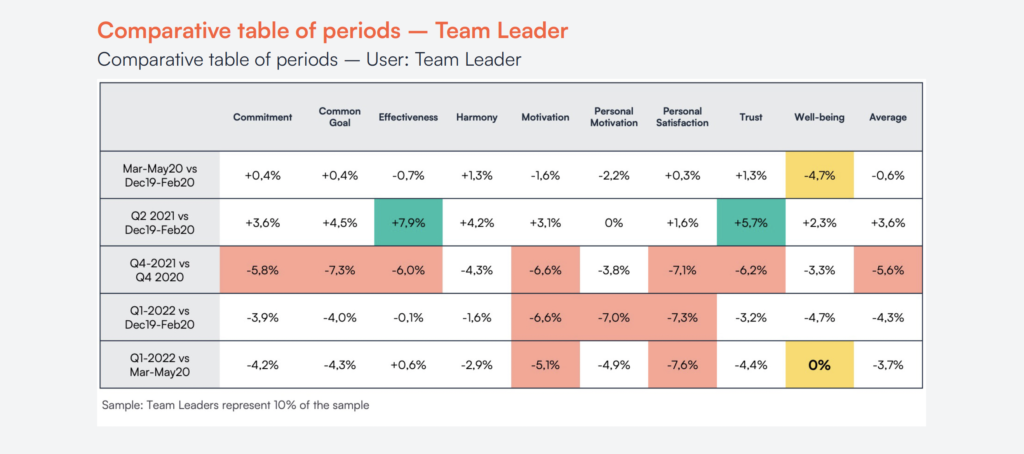The new key performance predictor? The Leadership Perception Gap. (Are you measuring it?)
Analyzing +1.5M Data*, we discovered that during the first year of Pandemic, Team Leaders considered that their teams had increased Effectiveness. On the other hand, Team Members considered they had lost Effectiveness.
During the second year, we saw how Team Members restored their Well-Being at work in the 2nd semester.
According to TeamLeaders, Well-Being in the second year decreased month after month, and there was no sign of recovery.


This phenomenon is well known as “Leadership Perception Gap”. The Leadership Perception Gap is, in short, “the difference between the perception company executives have of the effectiveness of their organization’s leaders and the perception of their employees. When the perceptions differ too greatly, the resulting gap represents a real impediment to the successful execution of company initiatives.”
It is evident how leading companies, who are able to measure and understand their different populations, take better, quicker, and more precise decisions. The opportunity comes also to support people, especially with current hybrid environments and new ways of working, to discover and better understand their perception gaps with others (Team Members, other teams, Managers…).


These are just some examples on how crucial is to consider Perception Gaps at all level as one of the key indicators of our organizational “human listening”, as it may drive to discover unconscious motivational patterns, that can be easily turned into key insight to fidelize our Talent and increase performance.
In psychology, motivation is the aggregate of all the individual motives, needs, and drives operative in a person at any given moment that influence the will and cause a given behavior. It is also an internal process, a condition inside us that desires a change, either in the self or the environment. Thus, motivation can be intended as the force that enables an individual to act in the direction of a particular objective.
Many studies have stated a strong correlation between motivation and TeamMembers’ performance. According to Zhang, Crant and Weng (2019) a key element of each collaborators’ personality is their level of intrinsic motivation which determines the level of job satisfaction. For instance, people who have an objective, whether personal or set by their organization, are more committed and motivated than those who are not aligned with the team and its values.
Now, what happened if Perception Gaps are working “behind the scene”, conditioning behaviors, motivation and, ultimately, results?
Each generation -no matter if Baby-Boomers, X, Y, or Z- is uniquely valuable to the teamwork. If TeamLeaders and Managers are willing to motivate each generation, they should be trained with specific EQ skills to understand their personalities, needs and preferences. Understanding their own perception gaps, leaders can also identify development opportunities of their unique and distinctive skills. Knowing in advance that there is a gap in the perception of a key element – such as motivation or any other key drivers, individually or related to the whole Team – that slows down or even hinders the achievement of common goals in a team, is a decisive plus when it comes to managing a team and being able to intervene in time.
In this sense, TeamEQ play ahead: the methodology used in our platform allows each Leader and Team Member to compare his/her perception to the average of their peers, enhancing individual and collective new awareness and insights that also allow to divide the collected data by role within the Team. So, one can easily compare the trend of the variables of different subgroups, always respecting privacy. How will you measure perception gaps in your organizations from now on, in order to focus on their own specific needs, to improve and be prepared for changes?
*Observatory The Future of Teams, TeamEQ
** SARAH SKERIK: Beware the Leadership Perception Gap
Zhang, Y., Crant, JM., and Weng, Q. (2019), ’Role stressors and counterproductive work behavior: The role of negative affect and proactive personality,’ International Journal of Selection and Assesment,27 (3), 267-279.



